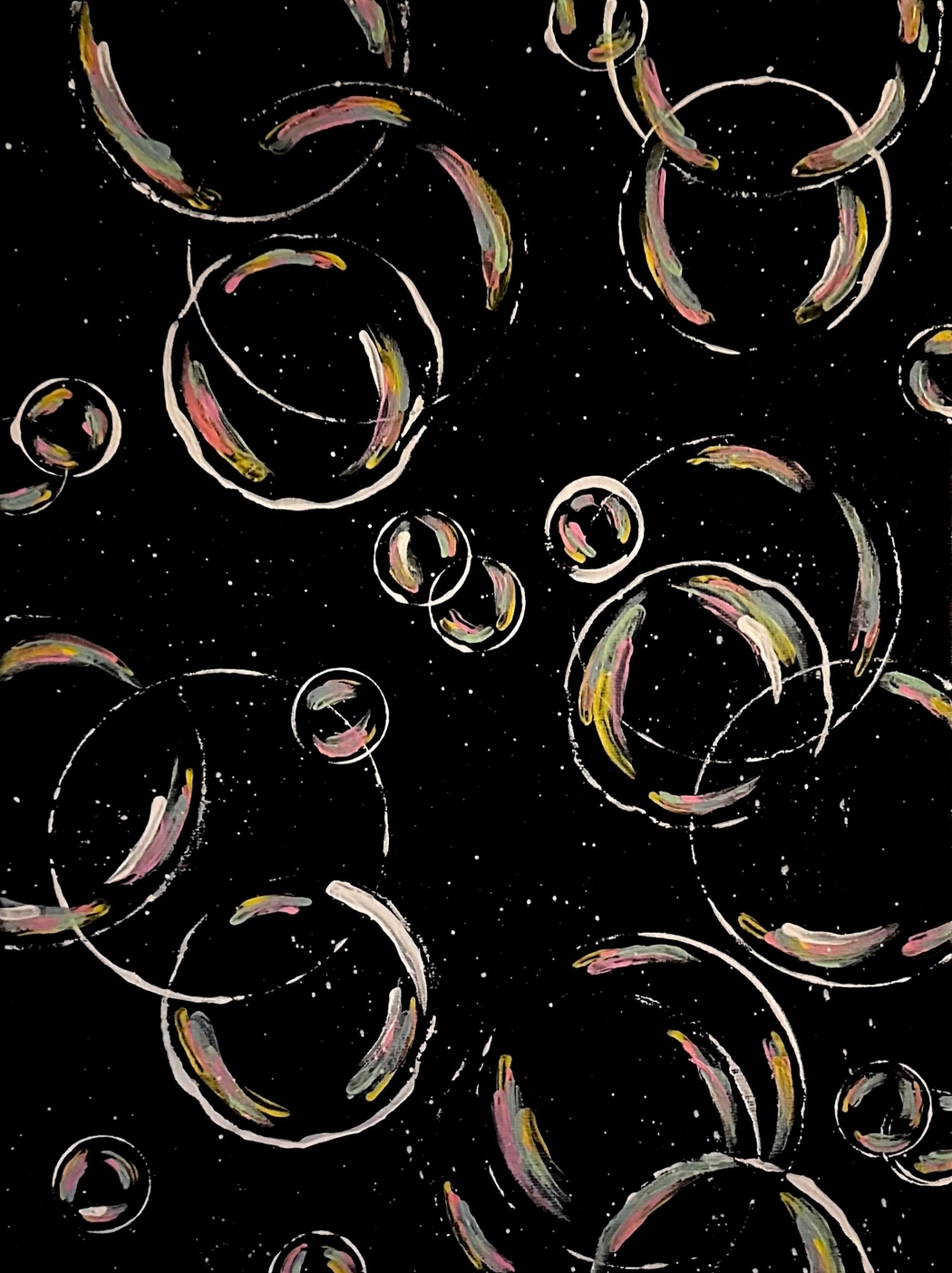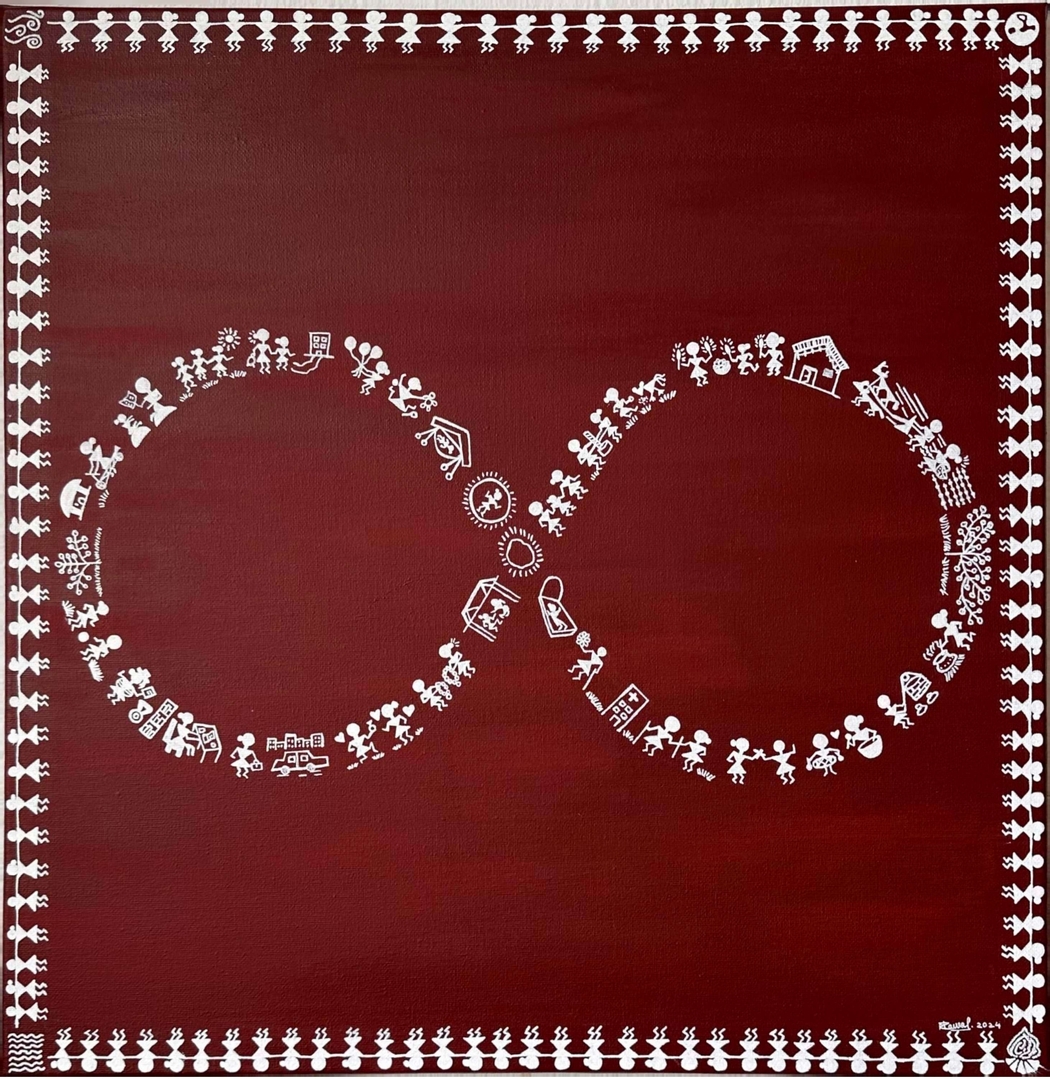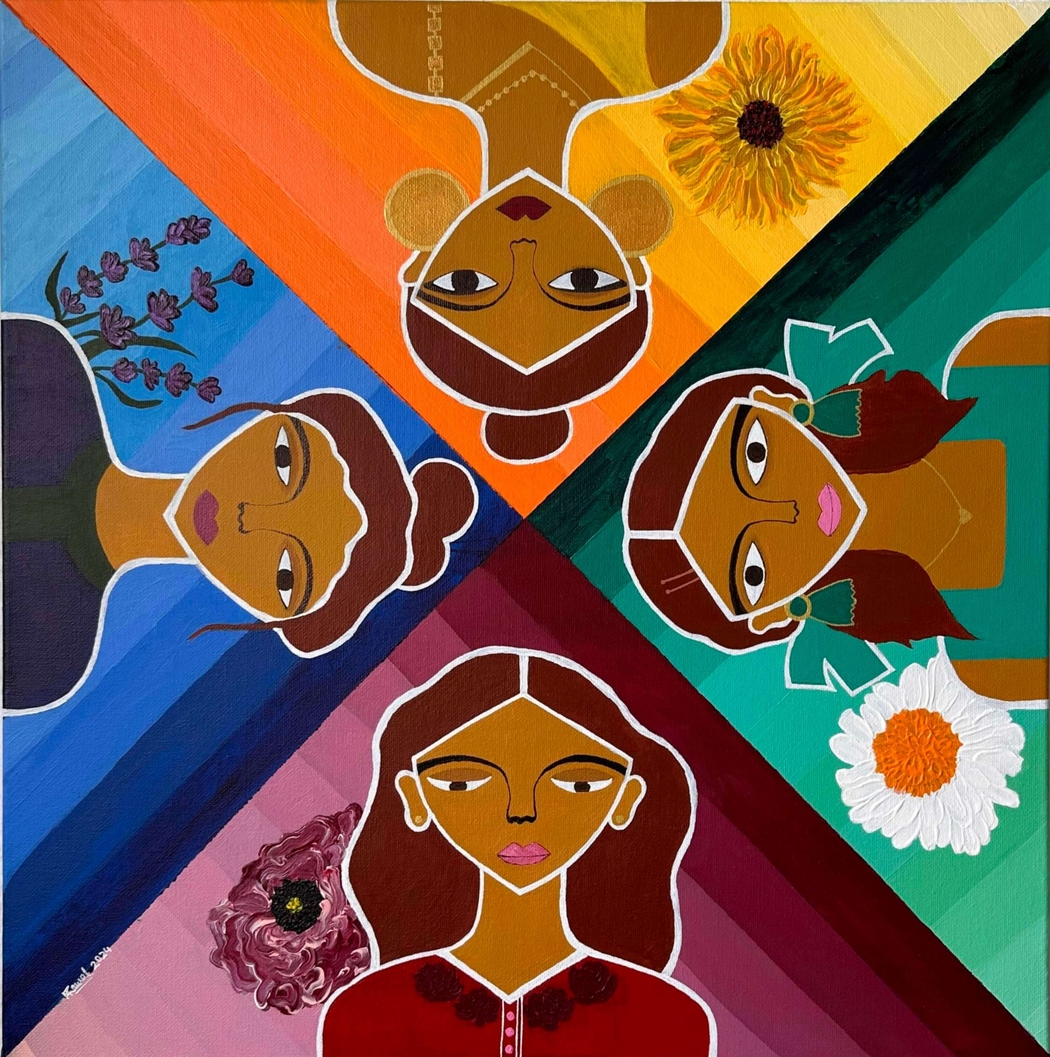Mansi Rawal
You describe art as a continuation of logic through intuition. How do you balance structure and spontaneity in your creative process?
I usually begin with a loose framework – a quick scribble on a sticky note, words, colors, or a guiding idea. Structure helps me start, but from there, I let intuition take the lead. It’s not so much a tug-of-war between them, but more about knowing when each one is needed.
Some pieces, like ‘Saṃsāra’, began with a clear and intentional mapping of the stages of a soul’s journey. Others, like ‘Womanhood’, found their emotional voice through letting go. The most spontaneous strokes often come from hours of quiet preparation. And when I find myself over-planning and the work starts to resist, that’s my cue to step back and loosen my grip. I welcome instinct and missteps—they’ve often taught me the most. For me, it’s a dialogue between the mind and the emotions. The balance is always shifting, but that’s exactly what keeps the work honest and alive.
Your practice blends storytelling, observation, and emotional depth. What usually sparks the beginning of a new piece — a thought, a feeling, or a visual impression?
Observation and reflection work hand in hand for me. What I see outside often echoes something I’m processing within. From that moment of recognition, a story begins to unfold. A new piece usually starts with an emotion, a thought, or a memory, often something unresolved or quietly persistent. The initial spark might come from a conversation, a passing mood, or a moment of stillness.
That spark often grows into an image or a sentence, a fleeting gesture that stirs something deeper as I create. I remember once travelling by bus, with lush mountains on one side and the ocean on the other. In that moment, I felt how the bridge between our own inner depths and heights—between darkness and light—is often just a feeling along the journey, not something fixed or defined. It made me think about how we carry memories as we move through time. That experience became ‘Beneath and Beyond’.
 Mansi Rawal | Floating Pop | 2023
Mansi Rawal | Floating Pop | 2023
How has living in different cultural contexts, like India and Germany, influenced your perspective as an artist and storyteller?
Living in India and Germany has shaped the way I see, feel, and create in profound ways. I carry a deep-rooted sense of empathy, humility, and connection – values that comes from growing up in the Indian culture while In Germany, I’ve learned to value independence, clarity, and a sense of freedom that comes with responsibility. It’s also where I began to understand the strength in quiet reflection and the idea of detached attachment.
Both cultures, in their own ways, have taught me to explore not just different art forms, but different ways of expressing emotion, memory, and story. The contrasts between them don’t feel like opposites anymore, but rather parts of a larger whole. My work often tries to hold that space, where differences can meet and something true and universal can emerge.
You move across different styles and mediums with ease. Do you view versatility as a conscious choice or a natural evolution of your process?
Versatility is mainly a natural evolution as I tend to follow the form that fits the feeling in that moment. I’m more interested in the truthfulness of process than in stylistic consistency. For me, versatility isn’t about being scattered – it’s a kind of attentiveness. It’s about listening – to the material, to myself, and to what each idea truly needs to be expressed. Switching mediums helps me access different layers of thoughts and emotions – what I can’t say with a brush, I might find in texture or line. Feeling the grain of paper or threads, the softness of pastels, the flow of watercolors or the density of acrylics, each medium stir something different within me. Sometimes, the medium knows what I’m feeling before I do.
 Mansi Rawal | Saṃsāra | 2024
Mansi Rawal | Saṃsāra | 2024
How do you define success or fulfillment in your artistic journey?
I create to lose—time, noise, and sometimes even myself—but only to find something clearer and quieter in return. When it gets hard, what keeps me going is the freedom to simply express and connect, not impress. So, for me, fulfillment comes from making something that feels true. I find peace in the process and discover new spaces within myself. It helps me understand who I am, how I relate to others, and how to move and uplift emotions – both mine and theirs.
Creating ‘Simba’ was a long journey—one that took years of dedication and reflection. Finishing it felt like reconnecting with a deeper part of myself. This piece embodies resilience, strength, and a meaningful bond that continues to inspire me. In its quiet way, Simba felt like success because it gave me peace.
And then there’s ‘Floating Pop’, a piece that still makes my friends smile as they share memories of running home from school, making soap bubbles in the air—just like I did. That kind of connection via art, that shared memory, is its own kind of fulfillment.
You also write poetry and quotes. How do writing and visual art inform or complement each other in your life?
Writing and visual art are two languages of the same inner voice. When I can’t find the right words, I paint. When the image won’t come, I write. Painting offers silence; writing brings clarity. Together, they let me express what neither could carry alone. They hold space for both clarity and ambiguity — a meaning that is felt more than understood. Painting gives me room to feel without explanation, while writing helps me understand what I’ve felt. I paint when I’m inward and still; I write when something needs to move through me.
 Mansi Rawal | Womanhood | 2024
Mansi Rawal | Womanhood | 2024
What role does reflection or introspection play in your creative work?
Reflection is the heartbeat of my process. Without it, I’m just producing—not truly creating. My work often begins after moments of silence or deep questioning. I need to sit with emotions, memories, or experiences long enough for them to take shape.
Introspection helps me move beyond the surface to uncover what’s hidden or unresolved. It slows me down, encourages deeper questions, and brings a greater sense of presence and meaning to the work. For example, I didn’t fully grasp what courage meant for someone broken yet standing strong until I painted ‘Fragmented Drift’.


Leave a Reply